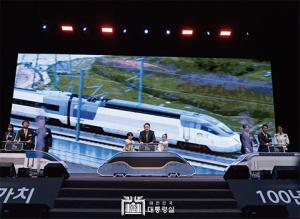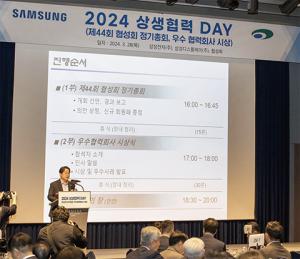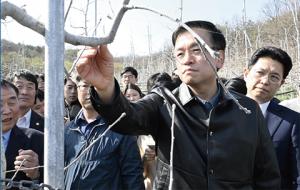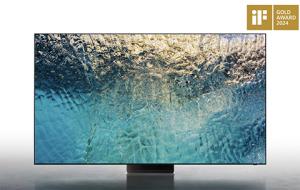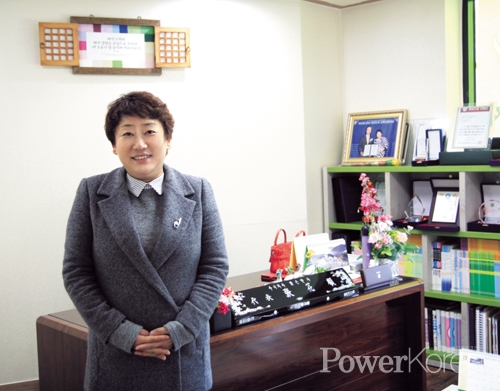 |
||
| ▲ ㈜밝은한자 장화순 대표 | ||
“한자를 알면 세상이 보인다”
스토리텔링에 기반한 연상학습법으로 한자교육의 새로운 패러다임 제시
㈜밝은한자 장화순 대표
우리나라는 가까운 중국, 일본과 함께 지난 수천 년간 한자문화권 안에 속해왔다. 세종대왕이 창제한 한글의 빛나는 업적 아래 누구나 쉽게 글을 읽고 쓸 수 있게 되었지만, 우리가 일상적으로 사용하는 단어의 70% 이상이 한자에 기반을 두고 있다는 점은 부인할 수 없는 사실이다. 이에 이번 송년호 <월간 파워코리아>에서는 스토리텔링에 기반을 둔 연상학습법으로 한자교육의 새로운 패러다임을 제시하고 있는 ㈜밝은한자의 장화순 대표를 만나봤다.
문장 이해력과 어휘력 높여주는 ‘한자(漢字)’의 중요성
요즘 우리가 가장 쉽게 들을 수 있는 단어는 ‘하야’와 국정‘농단’이다. 하야(下野)란 높은 직위에서 내려와 시골로 돌아간다는 뜻이고, 농단(農壇)은 깎아지른 듯 높이 솟은 언덕이라는 뜻으로 높은 곳에 올라 상황을 살핀 뒤 이익을 혼자서 독차지한다는 의미를 품고 있다. 이처럼 ‘한자(漢字)’는 말하기는 쉽지만, 본래의 뜻을 파악하기는 어려운 단어들의 이해를 돕고, 자신의 생각을 보다 분명한 어휘로 표현하기 위해 반드시 필요한 요소다. 그러나 문제는 이러한 한자의 중요성을 망각한 채 홀대하는 경향이 늘어나고 있다는 점이다. ㈜밝은한자의 장화순 대표는 “한자학습의 부재는 학생들의 어휘력 빈곤은 물론, 문장 이해력 저하와 학업 능력 악화에도 심각한 영향을 미칩니다. 소위 ‘실질문맹’이라는 ‘글을 읽되 글월을 이해하지 못하는’ 학생들이 늘고 있는 것이죠. 단어의 뜻을 정확하게 알고 사용하는 것이 자기 생각을 표현하는 첫 걸음인 만큼 언어가 형성되는 시기의 한자교육이 반드시 필요합니다”라고 강조했다.
이에 교육부에서는 ‘2015 개정교육과정’을 추진하며 초등학교 교과서에서의 한자 표기 방안을 모색해왔으며, 지난 11월 30일 열린 ‘정책 연구 토론회’를 통해 초등학교 5~6학년 국정교과서(도덕, 국어, 사회, 수학, 과학)에 있는 주요 학습 어휘를 중심으로 370여 개의 한자어를 선정, 필요하다고 판단되는 경우 교과서에 표기하는 방안이 제시됐다. 또한 12월 중 최종 정책 연구 결과가 나오면 이를 검토해 2019년부터 초등학교 교과서에 적용될 예정이라고 밝혔다. 이러한 결정에 일부 사람들은 아이들의 학업 부담을 가중시킬 뿐이라며 극렬한 반대를 하고 나섰으나, 한국한자한문능력개발원 총괄본부장과 대외협력국장으로서 토론회에 참석하기도 한 장화순 대표의 생각은 다르다. 그는 “영어교육의 경우 초기에는 수천 개의 단어와 문법을 암기하는 방식으로 이뤄져왔지만, 최근에는 보다 언어의 본질적인 측면에 중점을 둔 실용교육으로 변화했습니다. 한자교육도 마찬가지입니다. 아이들에게 수천 자의 한자를 암기하도록 하는 것이 아니라, 우리가 평소에 사용하는 말인 ‘국어(國語)’의 이해력을 높이고, 언어 사용을 보다 유연하고 수월하게 할 수 있도록 돕는 차원의 한자 교육이 필요하다고 생각합니다”라고 의견을 피력했다. 이 밖에도 한자문화추진위원회 김정식 회원은 “한글 속에는 한자의 깊은 뜻들이 담겨있다. 그런 뜻을 쉽게 풀어서 이야기하지 않아도 그 글자만 갖고 이해할 수 있는 것이 바로 한자이고 우리가 사용하는 이름자도 그것을 일일이 풀어서 한글로 쓸 수는 없다. 그렇기에 어려서부터 간단한 생활 한자 정도는 배워야한다고 생각한다”고 전했고 왕원근 회원은 “법조계, 의학계, 과학 분야 등도 전문 용어의 95%가 한자어이다. 그 한자어를 공부한 사람들이 그 책을 읽을 때 그 문의 속도가 빠르다는 것은 이미 입증 된 상태이다. 그렇기에 한자를 조기에 교육시켜서 그것이 머릿속에서 채화되고 채득되는 순간에 아이들의 사고의 지평이 넓어질 수 있을 것이라 생각한다”고 전했다.
기초부터 재미있게 배우는 한자교육
한자교육에 대한 장화순 대표의 철학이 그대로 담겨있는 곳이 바로 ‘㈜밝은한자’이다. 지난 2015년 12월 8일 설립된 이래 양평과 남양주를 중심으로 한자교육을 펼쳐온 밝은한자는 기존의 암기와 복습 중심의 한자 학습법에서 탈피, 사자성어와 파자, 한자에서 연상되는 스토리텔링 교육법으로 학생과 학부모들의 큰 호응을 얻고 있다. 특히 2004년 한자 국가공인자격사범증 취득과 한자교육진흥회를 비롯 정규 16과목 및 한자교육강사로서 필요한 모든 자격을 취득한 바 있는 장 대표가 직접 고안한 ‘연상기법’은 말문이 트고 한글을 막 뗀 어린아이일수록 더욱 큰 효과를 발휘한다는 점에서 언어학습으로서의 한자의 효용을 극대화하고 있다. 그는 “연상기법은 기본부수에서 시작해 생활 상식과 전설, 동화, 고전 우화로 연결됩니다. 같은 부수를 가지고 있거나, 의미가 연결되는 한자들을 서로 연상해서 익히는 것이기 때문에 다양한 한자들을 외우기에도 쉽고, 마치 동화책을 읽듯 이야기를 통해 내용을 전달해 지루함 없이 즐겁게 한자를 배울 수 있습니다”라고 설명했다.
밝은한자의 가장 큰 차별점은 별도의 한자전문학원을 운영하는 것이 아니라 태권도 학원 등에 전문 강사들이 방문해 교육을 진행하는 새로운 방식이라는 점이다. 이는 방과 후 학원과 체육관 등에서 많은 시간을 보내야만 했던 아이들은 물론 교육비 부담에 고심하던 학부모들에게도 더없이 훌륭한 해결책이 되고 있다. 연상학습법 및 태권도학원 연계교육으로 한자교육 열풍을 일으키고 있는 밝은한자는 현재까지 회원 수 3,200명을 돌파한 상황이며, 오는 2017년 1월 2일 설립될 서울 천호동 지사를 시작으로 활동 영역을 전국으로 넓혀나갈 방침이라 밝혔다.
동북아 시대 이끌 글로벌 리더 양성에 힘쓸 것
이 외에도 서울시교육감 인정도서인 ‘한자와 국어’ 등을 이용해 아이들이 장차 국어와 논술에 대비할 수 있도록 수준 높은 교육을 제공하고 있기도 한 장화순 대표는 현재 TV조선의 아침방송 프로그램 「광화문의 아침」에서 <세상을 보는 연상한자>라는 코너를 진행하며 대한민국 모든 국민들에게 한자에 대한 관심을 불러일으키기 위한 노력을 펼치고 있다. 연상학습법을 통해 한자를 알기 쉽게 가르쳐주는 이 프로그램은 시청자들의 높은 호응 속에 지난 6개월 여간 방송을 이어오고 있으며, 소탐대실, 역지사지 등의 사자성어를 이용한 스토리텔링 방식으로 세상을 보는 안목을 넓혀준다는 평가를 받고 있다. 장 대표는 “지난 12월 초 방영분에서는 혼란한 현재 시국을 반영해 ‘사면초가’에 대한 풀이를 했습니다. 그리고 이후 이어질 방송에서는 ‘국정농단’ 등의 내용을 통해 국민들의 상처 입은 마음을 보듬어 줄 수 있는 프로그램을 만들어가고자 합니다”라고 밝혔다.
최근 밝은한자에서는 보다 효과적인 교육을 위한 동영상 교재를 출시했다. 50분짜리 6편의 동영상으로 구성된 <장화순의 세상을 보는 연상한자 시즌1>은 대기업과 중소기업, 학원 등에서 한자 교육용으로 활용되는 등 큰 인기를 끌고 있으며, 일반인들을 위한 전용 어플리케이션 제작이 마무리 단계에 돌입한 상태이다. 장 대표는 “저희 동영상 교재는 그림과 애니메이션을 통해 마치 동화책을 읽어 내려가듯 재미있는 스토리텔링으로 부수한자를 배울 수 있도록 했습니다. 연령대와 상관없이 누구나 쉽게 한자를 공부할 수 있으며, 8급부터 1급까지 합격이 가능한 수준의 공부가 시간과 장소에 구애받지 않고 어디서나 가능하다는 것이 장점입니다”라고 설명했다. ‘세상을 보는 연상한자 시즌1’은 향후 태블릿PC에 전용 앱과 함께 탑재되어 홈쇼핑 방송을 통해 공개될 예정이다.
현재 ‘미래한자’와 ‘경기한자’의 대표직을 역임하고 있기도 한 장화순 대표는 더 많은 학생들과 국민들에게 보다 알기 쉬운 한자학습법을 전파기 위한 노력을 펼치고 있다. 앞서 설명한 동영상 교재 출시도 그러한 계획의 일환이며, 더욱 사업영역을 확대하기 위한 투자자 모집에도 발 벗고 나서고 있다. 2017년 말까지 회원 1만 명 달성과 이후 교육기업 상장이 목표라는 장화순 대표. 전문 강사 육성과 지속적인 교육법 연구 등을 통해 흥미와 호기심을 자극할 수 있는 독창적인 한자교육법 개발에 최선을 다하겠다는 그의 열정이 동북아시아의 글로벌 리더로 성장할 아이들에게 꿈과 희망을 펼칠 날개가 되어주기를 기대한다.
“If you know Chinese characters, you can better understand the words"
Storytelling-driven associative learning as a new paradigm of learning Chinese characters
Jang Hwa-soon, CEO of Balgeunhanja
Chinese characters improve understandability and vocabulary
We often hear the words 'haya (resignation)' and 'nongdan (influence peddling) nowadays. 'Haya' in Chinese characters is to go back to the land and 'nongdan' a high hill meaning looking at the situation on top of the hill and monopolize the profits. Learning Chinese characters help us understand the meaning of the words and express our opinions with right words. The problem, however, is people tend to ignore the importance of it day by day. Jang Hwa-soon, CEO of Balgeunhanja says "The absence of Chinese character education can cause students poor vocabulary, understandability and academic performance. The number of students who can read but can't understand the meaning is on a steady rise. That's why learning Chinese characters as early as possible is much needed." The Ministry of Education has pushed forward '2015 Revised Curriculum' in order to find ways to mark Chinese characters in the elementary textbooks. In the policy research forum held on 30 November, the need of selecting 370 vocabulary for 5th and 6th grade elementary students (ethics, Korean, social studies, math and science) rose onto surface and use them if decided necessary. Also, the final policy research will be included in the elementary textbooks from 2019 if approved by the middle of December. Some school parents are against the policy for added burden to students but Jang, who participated in a forum as the head of the general headquarters and external affairs of the Korea Chinese Character and Classics Training, thinks differently. She says "Students were forced to memorize vocabulary and grammar at first when learning English but the paradigm has been changed towards more practical side. Chinese characters are the same. It's not focused on memorizing the thousand words but on better understanding and using of Korean." Kim Jeong-sik, a member of the Chinese Characters and Culture Promotion Committee said "Many Korean words are consisted of Chinese characters and better knowing the meaning of the characters can improve our understandability in Korean." Another member Wang Won-geun said "95% of the technical terms used in law, medicine and science in Korean is made of Chinese characters. Naturally, those who with knowledge in the characters understand the meaning of the terms better and faster. So the earlier you start the better the effect will be."
From basics to advanced in a fun way
Jang's expertise in teaching Chinese characters is well melted into the curriculum of Balgeunhanja. Since its establishment on 8 December 2015, Balgunhanja has grown to be one of the top academies in Yangpyeong and Namyangju with its storytelling and review-driven curriculum. Jang has obtained all the certificates necessary in the field including National Certificate for Chinese Characters Teaching in 2004 and she is qualified to teach 16 subjects in total. Jang's development of 'Associative Learning' in particular is very effective especially for the children who have just learned Korean. Jang explains "The method starts from radicals to move on to common sense, legend, fairy tale and fable. The same radicals and their meanings are connected to related stories so that children can learn Chinese characters like they are playing." The curriculum also is linked with Taekwondo so that children who also wish to learn the martial art can carry on both in one place. Thanks to this effective and practical curriculum, Balgunhanja currently has 3,200 students and Jang is planning to open the first branch in Cheonho-dong, Gangdong District, Seoul on 2 January 2017.
Fostering global leaders
Jang wrote 'Chinese Characters and Korean', a book recognized by a superintendent of education of Seoul for effective learning methods. She also has been running a regular slot under the title 'Chinese Characters in Associative Learning' in The TV Chosun program 'Morning In Gwanghwanmun' in an effort to raise public interest and is receiving a great response. Jang says "The episode in early this month, I interpreted a Chinese four character idiom 'Sa-myeon-cho-ga' followed by 'kuk-jeong-nong-dan' which I intended to reflect the currently political scandal in Korea." She recently has released a 6 episodes of 50 minute video material called <Jang Hwa Soon's Chinese Characters in Associative Learning Season 1> for the use for companies and other academies. She is also working on an app which will soon be released. Jang says "It contains pictures and animation and people can learn it like they are reading a children's book. The contents are designed to help you obtain a certificate from the first degree to 8th." The series is scheduled to be loaded in PC alongside the app to be released through home shopping channels soon. Meanwhile, Jang is serving as CEO of Mirae Hanja and Gyeonggi Hanja. It is Jang's goal to achieve 10,000 member students by the end of 2017 and to grow the company to be listed in near future. But above all, she is ambitious to grow her talented students as future global leaders. <Power Korea> wishes Jang a fruitful 2017.
오상헌 기자 osh0416@naver.com

